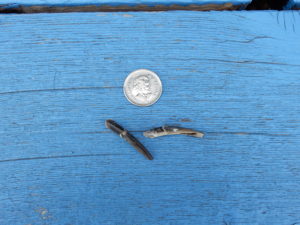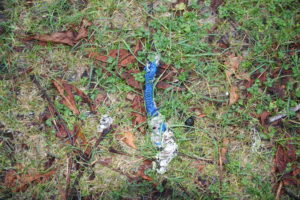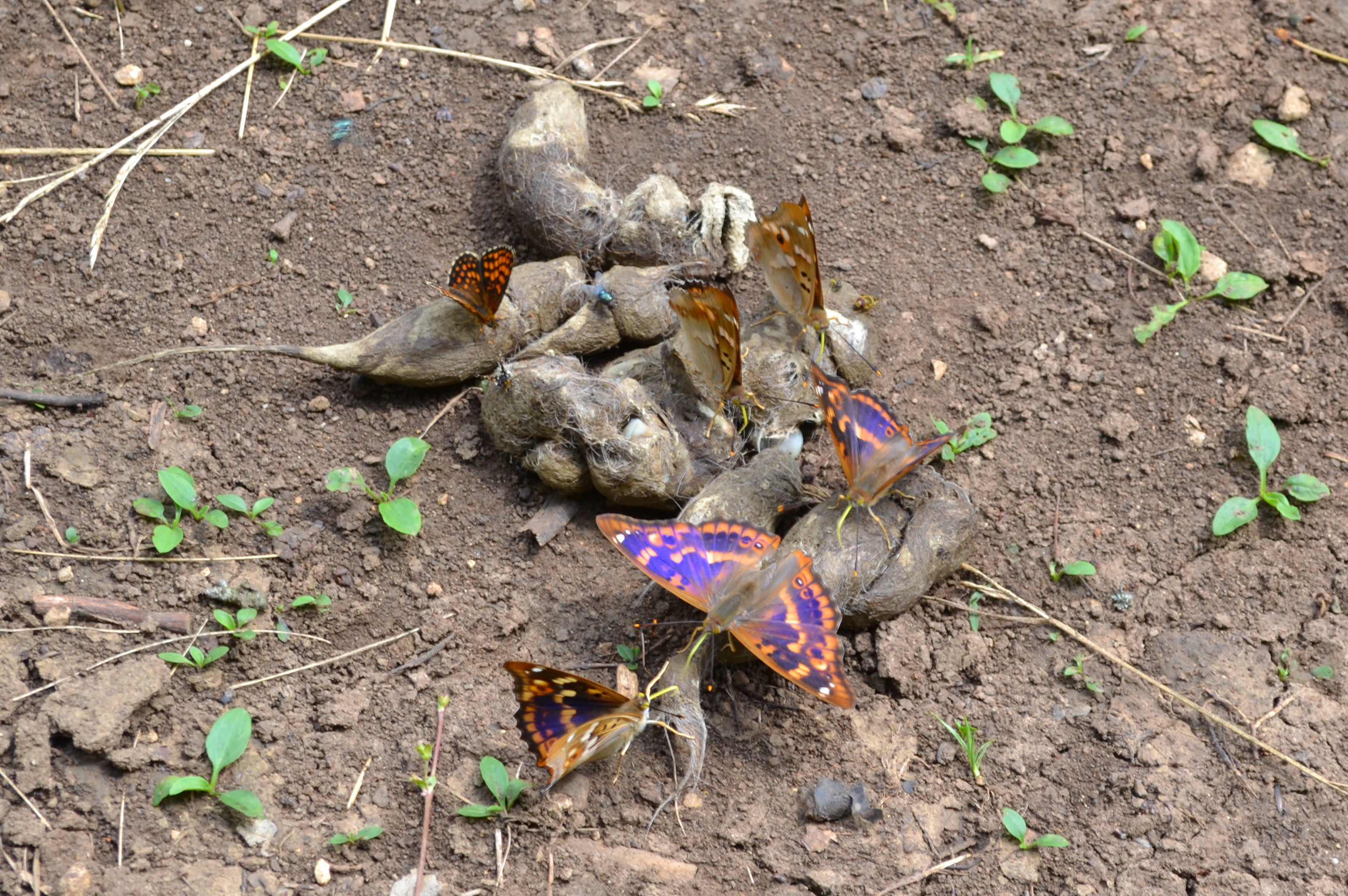Wolves have cast-iron digestive systems capable of handling fragments of bone and shell, animal fur and even the intact nails from a seal.

When it comes to food, wolves are opportunistic. They’ll eat berries and have been known to nibble on human food and garbage. String and remnants of clothes have also been found in the scat of camp robbers.
Wolf scat looks similar to a piece of cord and usually tapers to a point on the end. An adult wolf’s scat is usually between 25 to 38 millimetres (one to 1.5 inches) in diameter. If it’s runny, the wolf may have recently eaten some bloody meat.
Una Ledrew and Dave Ratcliffe were startled when they observed chunks of rope in wolf scat near their home. “They were chewing on and swallowing ropes of all kinds, plastic rope, big thick rope we use to tie up the skiff,” Ledrew said.

My guess is the wolves were after the salt left behind by human hands but some of the rope had been out in the open for ages. Wolf experts I spoke to were baffled as to why wolves would consume rope.
Wolf scat is more than just part of a wolf’s elimination process; it’s also an important part of lupine communication. Scat is one way wolves’ mark their territory and is often found in conspicuous locations such as trail intersections.
These visual and olfactory markers serve as a signal to warn other wolf packs out of their territory or to let family members know they’ve passed that way. Wolf scat is also part of nature’s recycling program, enriching the soil wherever it’s deposited.
But the biggest surprise about wolf scat is butterflies. They aren’t in it, they’re on it. Apparently, butterflies love wolf scat due to the high concentration of nutrients. In fact, numerous researchers told me, “If you’re looking for wolves, look for butterflies.”

